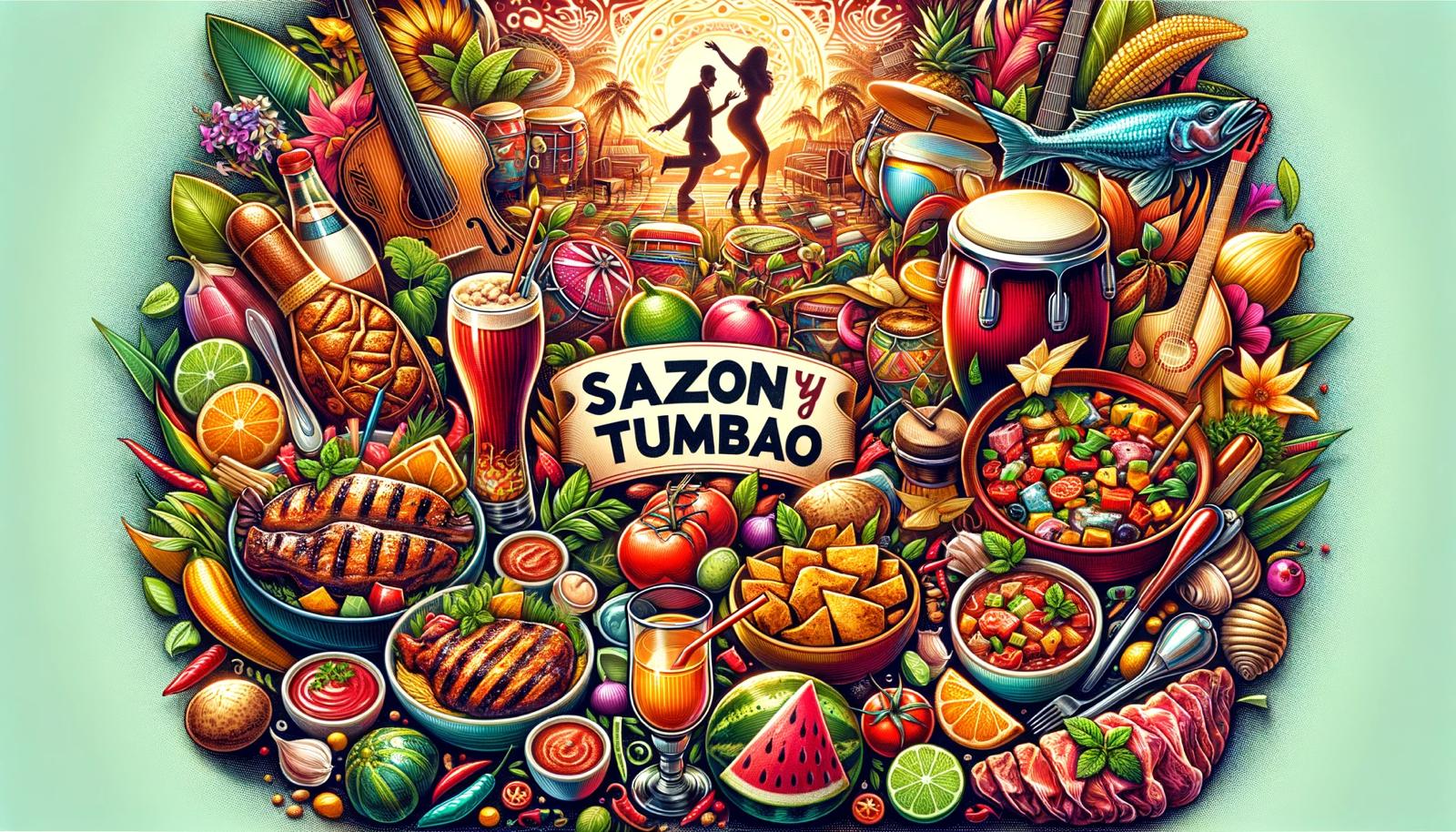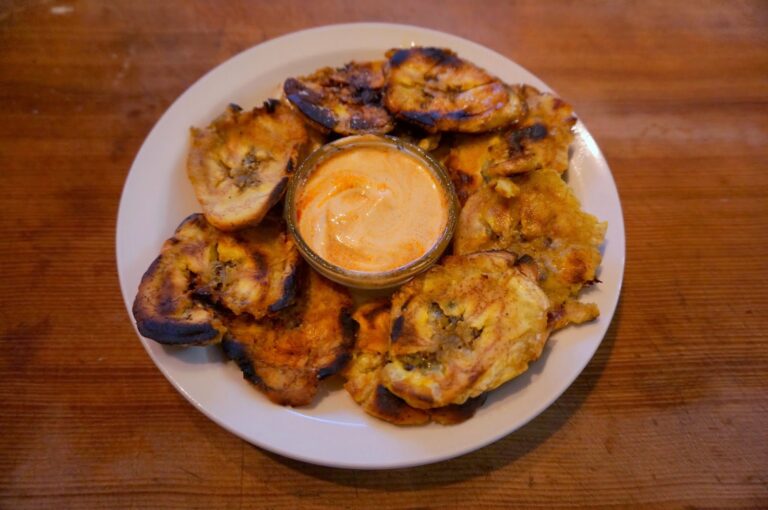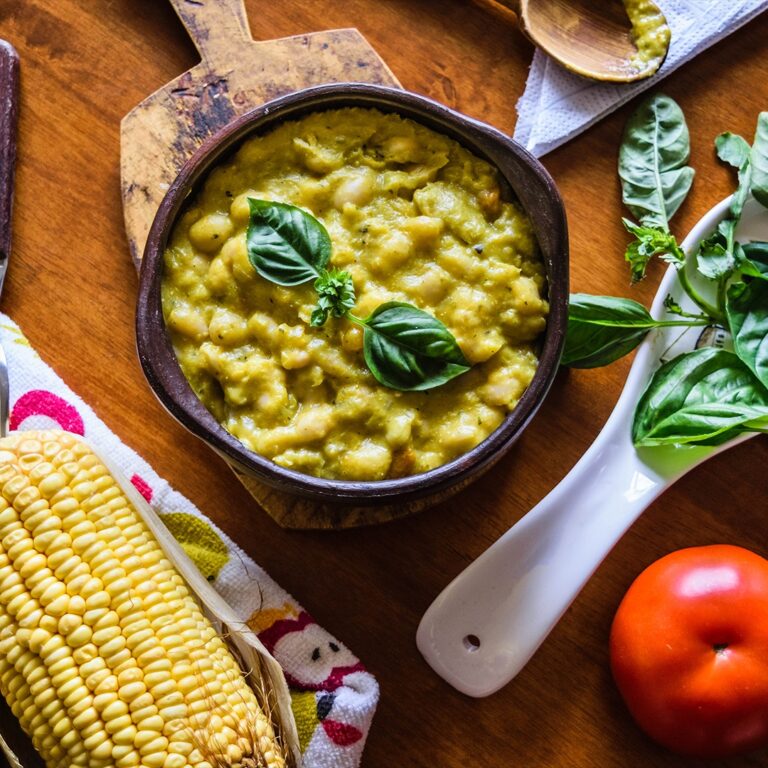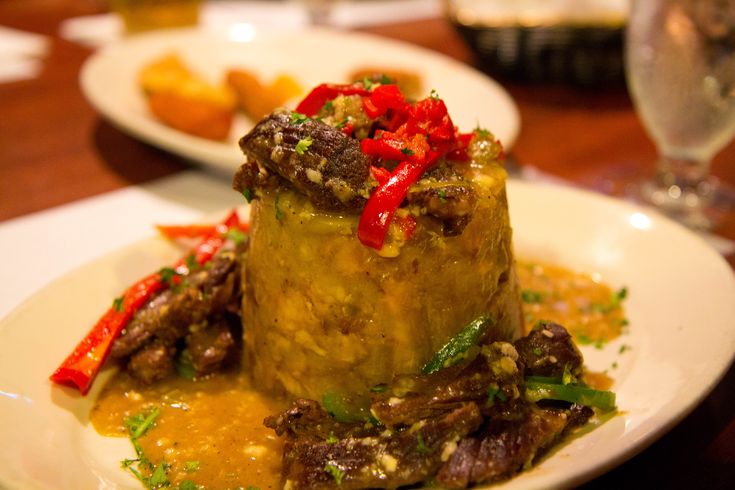Caribbean cuisine is a vibrant reflection of history, culture, and migration.
Every dish tells a story of people who arrived on the islands, whether by choice or force, and left their mark through food. One of the most underappreciated yet vital influences on Caribbean food is that of Chinese immigrants.
Between the mid-19th and early 20th centuries, thousands of Chinese laborers arrived in the Caribbean, primarily to work on sugar plantations after the abolition of slavery.
They brought with them their culinary knowledge, ingredients, and cooking techniques, which blended seamlessly with African, Indian, Indigenous, and European influences.

In this article, we explore the rich and often overlooked story of Caribbean Chinese cuisine, a flavorful fusion that emerged from migration, adaptation, and community.
Chinese Migration to the Caribbean: A Historical Overview
When and Why Did Chinese People Arrive in the Caribbean?

After slavery was abolished in the Caribbean in the 1830s, plantation owners sought new sources of labor.
This led to the arrival of indentured laborers from China, primarily from:
- Guangdong Province
- Fujian Province
The largest waves of Chinese immigration took place between 1853 and 1884 in:
- Trinidad and Tobago
- Jamaica
- Guyana (British Guiana at the time)
- Cuba
How Chinese Communities Integrated
After their contracts ended, many Chinese immigrants chose to stay in the Caribbean.
They opened:
- Grocery stores
- Bakeries
- Restaurants
- Food stalls
Over time, their cooking styles blended with local ingredients and flavors, creating a unique Caribbean-Chinese food culture.
Core Elements of Chinese Culinary Influence

Cooking Techniques Introduced
The Chinese brought practical, high-heat cooking techniques that were quickly embraced:
• Stir-frying: Fast, high-flame cooking in a wok.
• Steaming: Used for dumplings and buns.
• Deep-frying: Perfect for snacks and street food.
These methods became cornerstones of Caribbean street food culture.
Staple Ingredients Added to Caribbean Kitchens
Chinese immigrants introduced several key ingredients:
• Soy sauce
• Sesame oil
• Ginger and garlic (already used, but incorporated differently)
• Rice noodles
• Five-spice powder
Local cooks adapted these ingredients into Caribbean recipes, creating a new culinary language.
The Rise of Chinese Grocery Stores
In places like Trinidad and Jamaica, Chinese-owned grocery stores became community hubs, making Chinese ingredients more accessible to the broader Caribbean population.
This availability of ingredients allowed Caribbean cooks to experiment and create hybrid dishes.

Signature Caribbean Dishes Influenced by Chinese Cuisine
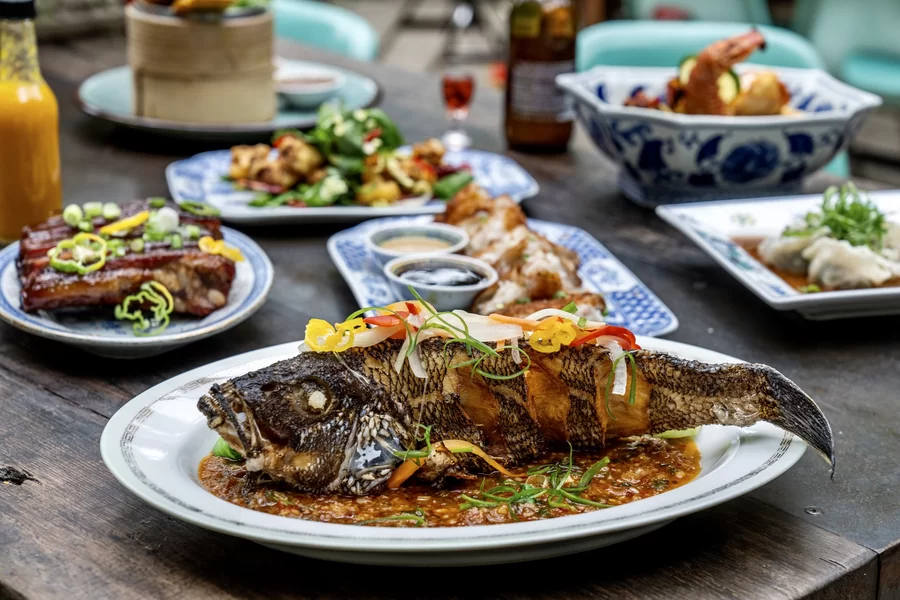
Chow Mein (Caribbean Style)
Image Suggestion:
A plate of Caribbean-style chicken chow mein with Scotch bonnet peppers and green onions.
ALT text: Caribbean-Chinese chow mein with local spices.

Chow Mein is a direct result of Chinese migration to the Caribbean, but it’s not exactly what you’d find in China.
Caribbean chow mein is made with:
• Egg noodles
• Stir-fried vegetables (carrots, cabbage, onions)
• Chicken, shrimp, or pork
• Soy sauce and oyster sauce
• Local seasoning like thyme, pimento seeds, and Scotch bonnet peppers
In Trinidad, Guyana, and Jamaica, chow mein is a go-to street food, often sold alongside pelau and fried rice.
Fried Rice (Caribbean Version)
Fried rice became a Caribbean favorite, adapted with:
• Saltfish or local meats
• Pigeon peas or kidney beans
• Caribbean spices like green seasoning
• Sometimes even plantains or callaloo mixed in
This fusion dish showcases the perfect marriage of Chinese technique and Caribbean ingredients.
Chinese Style Chicken and Pork
Caribbean cooks also embraced:
• Sweet and sour chicken/pork
• Soy-glazed chicken
• Char siu-style roasted pork
But the local versions often include:
• Scotch bonnet heat
• Caribbean green seasoning
• Additional spices like thyme and curry powder
Steamed and Fried Snacks
Dim sum-style steamed buns and fried wontons were introduced by the Chinese and quickly adapted with Caribbean flavors, becoming common at festivals and markets.
The Lasting Cultural Impact of Chinese-Caribbean Cuisine

Chinese-Caribbean cuisine is more than a fusion, it’s a flavorful symbol of migration, adaptation, and cultural resilience. From stir-fried chow mein to five-spice jerk pork, the lasting cultural impact of Chinese-Caribbean cuisine lives on in kitchens, street stalls, and Sunday family dinners across the islands.
Community Bonding Through Food
Chinese-Caribbean dishes became integral to community gatherings:
• Served at weddings, church events, and family parties
• Found at school fundraisers, street food markets, and Carnival stalls
New Food Businesses
Chinese-Caribbean food led to:
• Takeaway restaurants serving chow mein and fried rice alongside jerk chicken.
• Chinese-owned bakeries offering sweet coconut buns and local pastries.
• Street food vendors specializing in Chinese-style snacks with Caribbean flair.
This fusion cuisine became a symbol of multiculturalism across the islands.
Modern Caribbean-Chinese Cuisine: Reinventing Tradition
- Soy sauce
- • Sesame oil
- • Ginger and garlic (already used, but incorporated differently)
- • Rice noodles
- • Five-spice powder

Fine Dining and Fusion Cuisine
In recent years, Caribbean chefs have elevated Chinese-influenced dishes to gourmet levels:
• Jerk Pork Dumplings
• Scotch Bonnet Sweet and Sour Chicken
• Cassava Spring Rolls
These dishes celebrate Caribbean-Chinese heritage while appealing to modern palates.
The Diaspora Connection
Chinese-Caribbean cuisine has also migrated:
• Toronto: Caribbean-Chinese fusion restaurants thrive in neighborhoods like Scarborough.
• New York: West Indian Chinese takeout spots serve curry goat with fried rice.
• London & Miami: Festivals and pop-ups showcase Caribbean-Chinese street food.
Health and Nutritional Impact of Caribbean-Chinese Foods
While delicious, traditional Caribbean-Chinese foods can be heavy in:
• Sodium (from soy sauce and MSG)
• Refined carbs (white rice, noodles)
• Fried oils
However, modern Caribbean cooks are making these dishes healthier:
• Using low-sodium soy sauce
• Incorporating brown rice and whole wheat noodles
• Stir-frying with coconut oil or avocado oil
• Adding more local vegetables like callaloo and okra
This new wave keeps the flavor while promoting health-conscious eating.
How to Make Caribbean-Chinese Dishes at Home
Bringing the fusion flavors of Caribbean-Chinese food to your kitchen is easier than you think.

Essential Ingredients
• Soy sauce
• Sesame oil
• Oyster sauce
• Garlic and ginger
• Scotch bonnet peppers
• Green seasoning
• Rice or egg noodles
Simple Caribbean Chow Mein Recipe

Ingredients:
• 300g egg noodles
• 1 cup chopped chicken breast
• 1 cup sliced cabbage
• ½ cup grated carrots
• 1 onion, sliced
• 2 cloves garlic, minced
• 2 tbsp soy sauce
• 1 tsp sesame oil
• 1 tbsp Caribbean green seasoning
• Scotch bonnet pepper (optional, minced)
• Salt and pepper to taste
Instructions:
1. Boil noodles according to package instructions.
2. Heat sesame oil in a wok.
3. Add chicken, garlic, and green seasoning. Stir-fry until cooked.
4. Add vegetables and soy sauce. Stir-fry for 2-3 minutes.
5. Toss in noodles and Scotch bonnet pepper. Stir well.
6. Serve hot, garnished with green onions.
Final Thoughts: A Delicious Fusion That Defines the Caribbean

Caribbean-Chinese cuisine is more than a fusion of flavors—it’s a testament to the region’s complex history, resilience, and cultural richness.
It tells the story of people who crossed oceans, overcame hardship, and built communities that thrive to this day.
Every bite of chow mein or fried rice at a Caribbean street stall isn’t just food—it’s history, migration, survival, and joy all in one.
In the Caribbean, food is always a story—and the Chinese chapter is one worth savoring.
Image Suggestion:
A Caribbean street food vendor frying chow mein and serving fried rice at a bustling night market.
ALT text: Caribbean street vendor preparing Chinese-influenced dishes.
Disclosure: Our blog contains affiliate links to products. We may receive a commission for purchases made through these links. However, this does not impact our reviews and comparisons. We try our best to keep things fair and balanced, in order to help you make the best choice for you.
